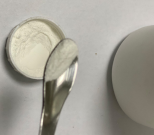Chinese VersionChina Suppliers > Hubei new DE sheng material science and technology co., LTD. > Buffering range of GOOD'S buffer EPPS
- Search Product
-
-
- Region :China/Hubei
- Tel : +86-18971041571
- Fax :
- Email :vickyzhao@whdschem.com
- URL :
- Add :Guanggu United Science and Technology City C8, Ezhou City, Hubei Province
- Details for Buffering range of GOOD'S buffer EPPS
-
Buffering range of GOOD'S buffer EPPS
Category : Other Chemicals/Others

CAS NO : 16052-06-5 EC NO : 240-198-8 MF : C9H20N2O4S MW : 252.3311 Specification : White Powder Packing : 500g/bottle Product description : In the fields of biochemistry and molecular biology, the use of appropriate buffers is of great significance for maintaining the stability of reaction systems. Among them, EPPS is a commonly used GOOD'S buffer, which is a buffer containing a piperazine ring structure, which endows EPPS with superior buffering performance. Its molecular formula is C9H20N2O4S, with a relative molecular weight of 252.33 g/mol, which is soluble in water, making it suitable for buffering requirements under many experimental conditions. What is its buffer range and what is its purpose? Let's take a look below. EPPS buffer range The pH range of a buffer is usually defined as within this range, which can stably maintain the pH of the solution and prevent drastic changes in pH value. As a buffer, EPPS has good buffer performance in a specific pH range of 7.3-8.7, and Pka value is 8.0 at 25 ℃. This range is suitable for many biochemical and molecular biological experiments, such as ultra-thin isofocal gel as a separator and as a buffer component of RNA samples. EPPS buffer range performance advantages 1. Stability: EPPS exhibits excellent stability within its buffer range. During the experimental process, it can effectively maintain the required acid-base balance when it is necessary to maintain the pH value of the solution unchanged. 2. Electrophoresis application: EPPS buffer is also commonly used in DNA/RNA electrophoresis experiments, especially in the process of preparing nucleic acid samples. It can provide stable electrophoresis conditions to ensure that nucleic acids move at an appropriate rate in gel. 3. Protein stability: In the range of pH 7.3 to 8.7, EPPS buffer can provide an appropriate environment, such as protecting oxygenated hemoglobin from oxidation to methemoglobin during freeze-drying. The buffering range of EPPS buffer covers many experimental acid-base conditions, ensuring the accuracy of experimental results. Regardless of the field, it exhibits excellent performance advantages and provides effective experimental conditions for experimental personnel. As an experienced manufacturer of buffering agents, Desheng can provide raw powder with a purity of up to 99%, good water solubility, and a complete range of product types. Personalized customized services are provided according to customer requirements. For ton level purchasing customers, price adjustments are flexible. If you have any interest, please feel free to contact us for purchase! Uses : Biological buffer Synonyms : 3-[4-(2-Hydroxyethyl)-1-piperazine]propanesulfonic acid;4-(2-Hydroxyethyl)-1-piperazinepropanesulfonic acid;HEPPS N-(2-Hydroxyethyl)piperazine-N-3-propanesulfonic acid;N-(2-Hydroxyethyl)-N-(3-sulfopropyl)-piperazine;HEPPS, ULTROL Grade;HEPPS~4-(2-Hydroxyethyl)-1-piperazinepropanesulphonic acid;aEPPS;HEPPS;3-[4-(2-hydroxyethyl)piperazin-1-yl]propane-1-sulfonic acid;4-(2-Hydroxyethyl) piperazine-1-propanesulfonic acid; Molecular Structure : 
- more>>Other Products
-
- • Biological buffer 3- [N, N-di (hydroxyethyl) amino] -2-hydroxypropanesulfonic acid DIPSO
- • Luminol Sodium Salt
- • 4-Aminophthalhydrazide
- • acridinium ester DMAE-NHS
- • acridinium ester NSP-DMAE-NHS
- • Acridine hydrochloride NSP-SA
- • Acridine hydrochloride NSP-SA-NHS
- • NSP-SA-ADH
- • acridinium ester ME-DMAE-NHS TOOS; 3-(N-Ethyl-3-Methylanilino)-2-Hydroxypropanesulfonic Acid Sodium Salt
- • TOPS; Sodium 3-(N-Ethyl-3-Methylanilino)Propanesulfonate; N-Ethyl-N-Sulfopropyl-M-Toluidine Sodium Salt
- • ADOS Sodium 3-(Ethyl(3-Methoxyphenyl)Amino)-2-Hydroxypropane-1-Sulfonate Dihydrate
- • ADPS N-Ethyl-N-(3-Sulfopropyl)-3-Methoxyaniline Sodium Salt
- • ALPS N-Ethyl-N-(3-Sulfopropyl)Aniline Sodium Salt; Sodium 3-(Ethyl(Phenyl)Amino)Propane-1-Sulfonate; Sodium
- • DAOS; Sodium 3-((3,5-Dimethoxyphenyl)(Ethyl)Amino)-2-Hydroxypropane-1-Sulfonate
- • HDAOS; N-(2-Hydroxy-3-Sulfopropyl)-3,5-Dimethoxyaniline Sodium Salt
- • MADB N,N-Bis(4-Sulfobutyl)-3,5-Dimethylaniline Disodium Salt
- • MAOS N-Ethyl-N-(2-Hydroxy-3-Sulfopropyl)-3,5-Dimethylaniline Sodium Salt Monohydrate
- • DAB 3,3',4,4'-Biphenyltetramine Tetrahydrochloride